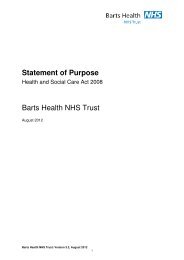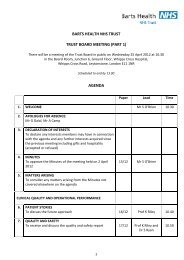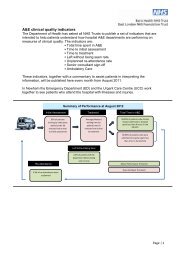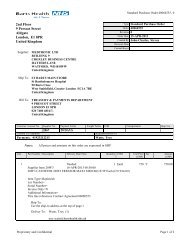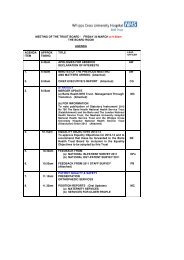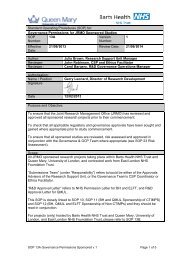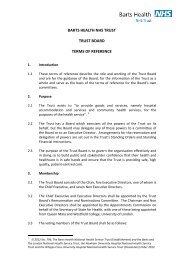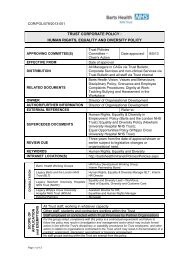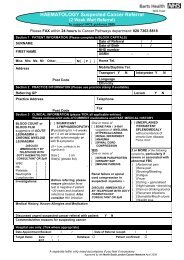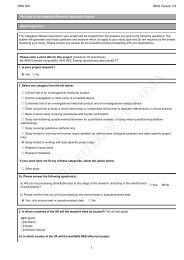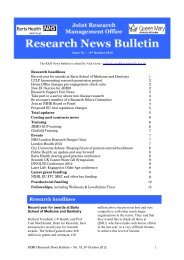Barts Health Equality and Human Rights Impact Assessment Report
Barts Health Equality and Human Rights Impact Assessment Report
Barts Health Equality and Human Rights Impact Assessment Report
- No tags were found...
You also want an ePaper? Increase the reach of your titles
YUMPU automatically turns print PDFs into web optimized ePapers that Google loves.
<strong>Barts</strong> <strong>Health</strong> <strong>Equality</strong> <strong>and</strong> <strong>Human</strong> <strong>Rights</strong> <strong>Impact</strong> <strong>Assessment</strong> <strong>Report</strong>III. LOCAL DEMOGRAPHICS: A BASELINE1. IntroductionThis report provides up-to-date demographic data relating primarily to Newham, TowerHamlets, <strong>and</strong> Waltham Forest: the three boroughs in which the merging hospitals aresituated. Where feasible, this section also relays information relating to Bart <strong>Health</strong>’s specificcatchment area (see section 2.1 for a definition). However, for a variety of reasons (whichare explained further on) this is not always possible. As such, the final section of this chaptercontains a list of websites where useful ward level data can be found (see section 17).In part A, focus is placed on information about people from different protected characteristicsas covered in the <strong>Equality</strong> Act 2010. Each sub-section relates to each protectedcharacteristic (age, disability, sex, gender reassignment, marriage or civil partnership,pregnancy <strong>and</strong> maternity, race, religion <strong>and</strong> belief <strong>and</strong> sexual orientation). Part B containsother relevant contextual information about the catchment area (e.g. deprivation,unemployment, child poverty <strong>and</strong> homelessness).When gathering data, priority was given to evidence sources that were broadly comparableacross all three boroughs. Whilst more detailed information was sometimes available at aborough level, 15 if this could not be compared to the other two boroughs it was not included.Part A: Protected characteristics overview2. Age <strong>and</strong> sexAt a Glance… there is a broadly equal proportion of men <strong>and</strong> women in all boroughs for mostage groups (although this does begin to change in the 75+ age group, with morewomen compared to men)when figures for the three boroughs are combined, people in the 25-34 age rangeare the largest group, though this is predicted to flatten out over the next twentyyears as the proportion of people in the 60+ age groups growsThe most up-to-date evidence on the age <strong>and</strong> sex profile of the three largest local authoritiesin question is provided by Greater London Assembly (GLA) 2011 round of demographicprojections (released January 2012). Projections for 2011 are provided so that these can becompared to 2011 census data when these are made available (release likely to be summer2012). Also included are projections for 2031 to show predicted change in age/ sex profile.15 See for example, Mayhew Harper Associates (2010) Counting with confidence: The population of WalthamForest89



